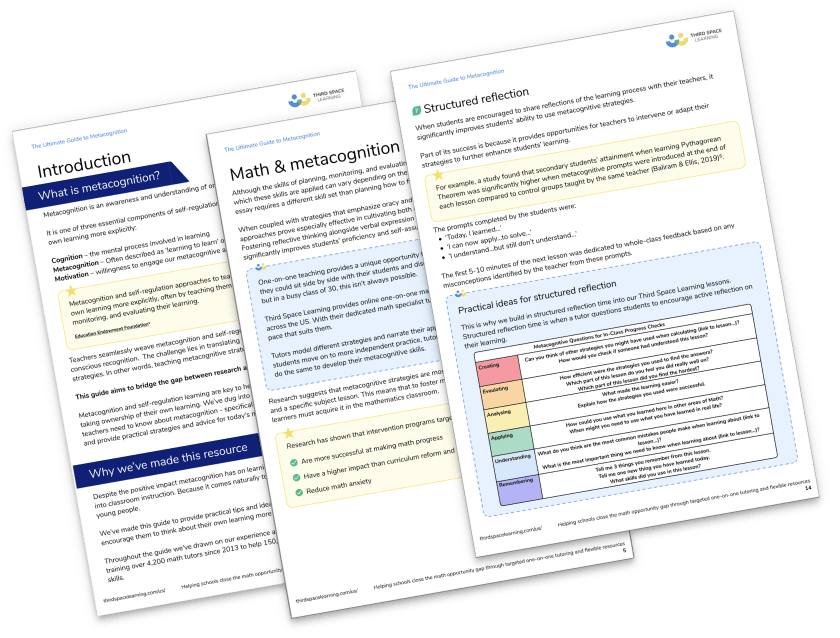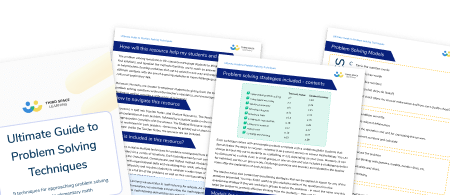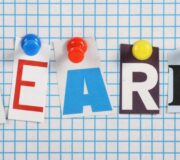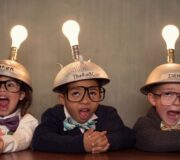Mental Math At Elementary School And How You Can Develop The Skills Children Need
Mental math is a crucial skill that children develop throughout elementary years and beyond. Here are some suggestions on how you can teach it most effectively.
- What is mental math?
- Fluency and mental math
- Mental math at elementary school follows a clear progression
- Why we need to teach mental math and number facts
- Mental math in Common Core
- What you should know about teaching mental math topic by topic
- How mental math skills influence children’s problem solving
- How to teach the key number facts and mental strategies year by year
- How to know when a child is secure enough to move on?
- Ahead with mental math
What is mental math?
Mental math is the ability to work out calculations in your head (not just addition sums). It means being able to give an answer to a question without having to write down every step of the calculation, although making the odd note is acceptable.
Good mental math skills in primary school generally show that a child has grasped what numbers represent, can spot patterns, and has developed excellent fluency and recall.
The Ultimate Guide To Problem Solving Techniques
Develop mental math skills in children with these 9 ready-to-go problem solving techniques that every elementary student should know.
Download Free Now!
Fluency and mental math
We most commonly associate mental math with mental calculation, but this may also bring connotations of rote learning and parroting known facts with little conceptual understanding.
However, our fluency in mental math relies on a firm and thorough understanding of number concepts and a flexibility with numbers which goes well beyond memorization.
Memorization may play a part in elements such as multiplication facts recall and number bonds, but these must be laid on top of firm foundations in the number system.
An understanding of place value, partitioning, doubling and halving, form the basis of mathematical fluency and accuracy.
Mental math at elementary school follows a clear progression
Mental math requirements for each year group build on each other. From number bonds to 20, through to cubed numbers, with incremental steps along the way.
Math concepts are introduced gradually and may start with physical representations using manipulatives (also known as concrete examples). Then children move to pictorial/visual representations of numbers and operations (such as bar modeling and number lines).
Once this understanding is grasped, we move to the symbols used for numbers and operations (the abstract) and it is the abstract element which we apply most commonly to mental math calculations.
However, this abstract understanding of number is built over time and may be revisited starting with the physical use of manipulatives as each new concept is introduced.
In a lesson you may go through all phases – from physical representation through to practice of the symbols in formal written calculations – and gradually move to the manipulatives being available to students who need it.
In a lesson on addition, for example, you may ask some children to count beads out in front of the class, then show the counting while using a counting stick, and then move to children counting out beads themselves, drawing those onto their sheets of paper, and then adding the numbers and addition sign.
Some children will not need to use the physical beads for their written part of the lesson, where other children may choose to keep that step while they practice.

Why we need to teach mental math and number facts
Children are unlikely to work out for themselves, the short cuts and mental devices that we have for making mental calculations less taxing.
Therefore, we need to actively teach these mental math strategies, together with the series of number facts, that will be needed for rapid recall each grade in elementary school.
Each child may find they are recalling number facts mentally at different stages of each new concept learned, but opportunities to assess a child’s mental math strategies can present at any stage.
When learning addition, a child may jump straight from adding together beads on the floor, to adding those numbers mentally in their head and then recalling those facts when opportunities to apply those known facts arise.
For other children they may not be able to recall the number association until they have progressed to writing the numbers down to remember the repeated number facts.
Read more:
Mental math in Common Core
The Common Core standards for first and second grade states that the principal focus of mathematics teaching in early elementary is to ensure that students develop confidence and mental fluency with whole numbers, counting and place value.
This should involve working with numerals, words and the four operations, including with practical resources (for example, concrete objects and measuring tools).

Meet Skye, the voice-based AI tutor making math success possible for every student.
Built by teachers and math experts, Skye uses the same pedagogy, curriculum and lesson structure as our traditional tutoring.
But, with more flexibility and a low cost, schools can scale online math tutoring to support every student who needs it.
Find out more
What you should know about teaching mental math topic by topic
Mental math skills within place value
Place value is a vital element of mathematical understanding without which students struggle to build fluency and accuracy. It can take a lot of time and repetition in first and second grade, to ensure the firm foundations needed for math in upper elementary.
Place value is how we learn to partition numbers, understand the true value of each digit in a number, and how we can solve many larger number problems mentally. Knowing, for example, that 24 + 17 = 20 + 10 + 4 + 7, can help us to work out that problem quickly in our heads without needing to use a formal written column method.
When using written column methods, our understanding of place value, alongside good mental math skills, help us to calculate each column accurately and ensure our answer is correct.
Our mental math skills can also help us to check if the answer is likely to be right. For example if I worked out 19 x 21 and had an answer around 400, I could estimate that is likely to be correct as I can round each number to 20 and I know 2 x 2 = 4.
Known number facts – a combination of number bonds and learned multiplication tables – help us to mentally calculate large numbers. An understanding of place value is vital in helping us to be flexible with the numbers without ending up with an answer which is wildly off mark.
In early elementary children start to grasp the concept of place value for 2 digit numbers, and should be able to recall and apply number bonds to 20. Recall in these formative years can be developed using math games and targeted math questions, as well as through more formal teaching methods.
In third grade, students are taught place value to 3 digits: hundreds, tens and ones. And by 5th grade children are expected to understand place value all the way up to 1,000,000,000.
You can see from the difference in those three years that any misconceptions around place value earlier on will cause much bigger issues as those numbers increase in value.
An understanding of multiplying and dividing by 10, using such resources as our Place Value Concertina, also helps students to understand the value as the number of digits increases/decreases.
Base 10 and Cuisenaire rods are also popular manipulatives which help with the concrete representation of much larger numbers – adding beads together is fine for single and even small 2-digit numbers but gets rather unwieldy when dealing with 3-digit numbers and beyond!
Mental math skills within addition and subtraction
The first building blocks of addition and subtraction will usually start in the Pre-K classroom, although they may start very informally. Even before school starts, 2 and 3 year-old children also gain an understanding of addition and subtraction through ‘more’ and ‘less.’ “Please may I have more apple juice?”, “Why have I got less than my brother?” and so on!
Such questions lead to the early introduction of counting on and counting backwards; starting with one more and one less. Children will then, in class, be offered bowls of counters, or objects such as toy cars, and encouraged to count them out of the bowl. This will build their 1:1 association as well as repeated practice of counting forwards and backwards.
Alongside this, teachers often show a pictorial representation – this may be a counting stick or string of beads or could be a visual representation of these.
This move from physical objects in the hand, to a pictorial representation, is working towards children doing their own visual representation by drawing counters onto paper, before they start writing numbers and using the symbolic representation.
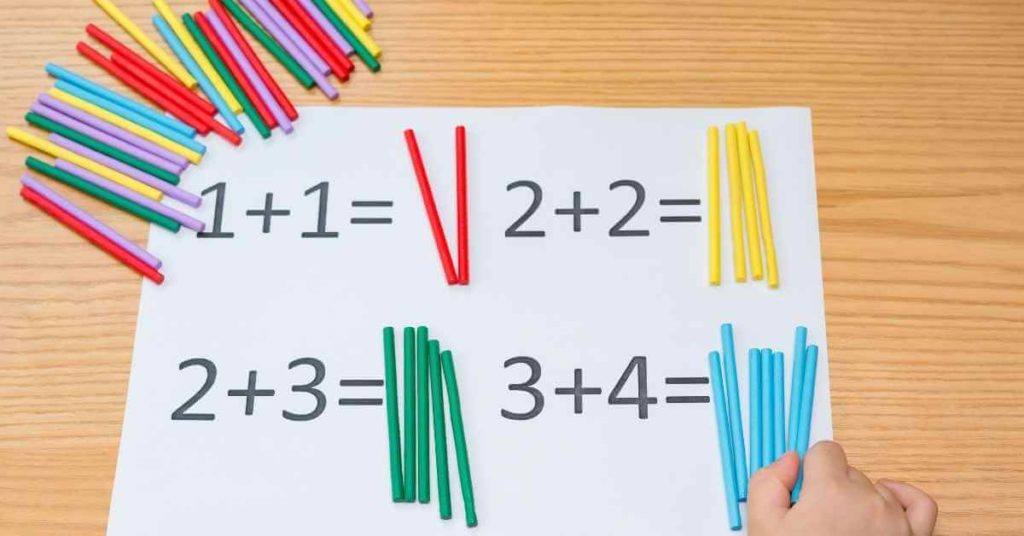
While children are working on this move from physical to symbolic representation of math number facts, it is possible to also introduce some repetition of number bond facts. This often starts with repetition of numbers bonds to five, then ten, then 20.
Mental math skills within multiplication and division
By the end of 3rd grade, students should know the multiplication facts from 1 -10. This includes not just the recall of them by rote but also the application of the facts. They will also be doing halving of numbers and begin their understanding that double is the opposite of halving a number or cake.
These skills can be practiced through practical tasks such as distance when traveling by car, as children can apply their double knowledge to simple elements such as how many miles is it from home to school.
It is important that this starts with single digit numbers as a sudden jump to trying to calculate doubling 220 miles (each way, when traveling long distances) might be a leap! But they will be used to counting on in 10s so this could be practise for counting on, in increments of 10 miles at a time, for example.
The inverse relationship between multiplication and division is not usually explicitly taught until 4th grade but through doubling and halving children will have some idea of this in early elementary years.
In 3rd grade children also need to learn the 3, 4 and 8 multiplication facts. There will be elements of this which require some rote learning or at least rote practice to give them fast recall skills.
You may try a range of mental math games as well as regular mental math questions to help them to apply those facts so that the connections between the rote repetition and the understanding of the numbers is firmly entwined.
In class, it is helpful to revisit physical object representation when introducing multiplication and division as they will need to see the objects as groups, and may practice ‘sharing’ among friends or dividing up resources, such as pencils, for each table.
How many pencils do we have? How many children sit on each table? If we share the pencils equally to each table will everyone get one? Will there be any left over?
All these questions can form part of not just a math lesson but an opportunity to get some math application practice when handing out pencils for a different subject too.
It is vital in upper elementary that children keep building on their application of math to real world examples as then they will not seem as abstract when such questions are in assessments later on.
Mental math skills within fractions and decimals
Children should understand, before decimal places and fractions are introduced, the true value of numbers. It is the understanding of what is being represented, both by single digits and columns of place value, that children can grasp working with numbers in a variety of ways.
If children have grasped that sharing something into five groups is division and represents breaking down a number into smaller chunks/groups, they can then apply that to their understanding of decimals and fractions.
Finding a fifth of a number, for example, is akin to sharing something between five people. So a fifth of a cake, or a fifth of 20 sweets, can all be treated in the same way as standard division.
Physical representation may be used again and showing in Base 10, for example, that a ten is made up of ten ones, which can then be divided into 2 groups of five, and that those two groups of five still make ten, will help to visualize that as ½ of ten.
Modeling that relationship with physical and pictorial representations on the board, or when working with small groups, will strengthen their ability to do the same mentally and can build children’s fluency with numbers.
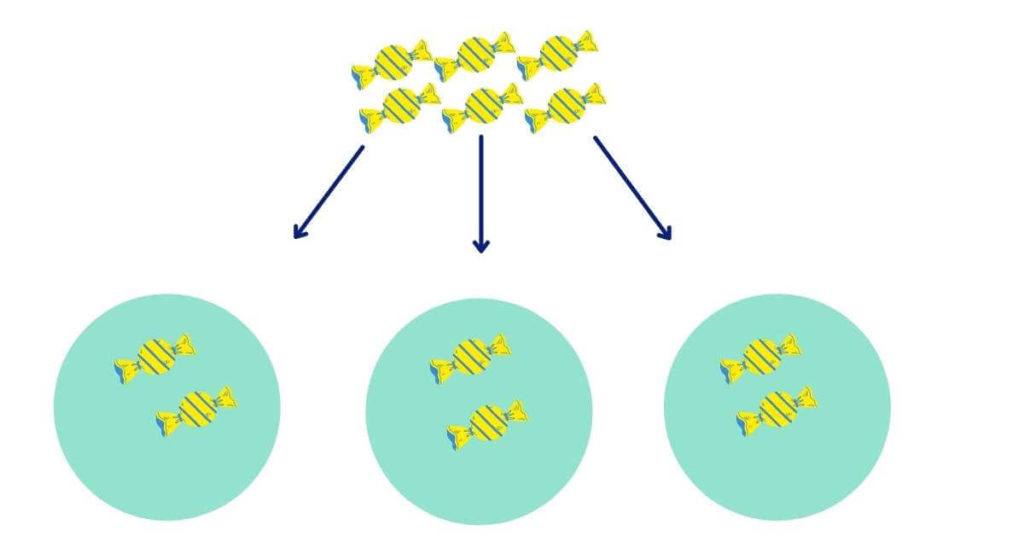
How mental math skills influence children’s problem solving
It is vital that children are given many opportunities to apply their mathematical skills to a range of problems. These may involve word problems which relate to real world scenarios such as paying for items at a store and working out the change you are owed.
Mental math practice often comes naturally in these scenarios, as well as being very useful for reducing the working memory required to complete the problem solving.
Problem solving where children do not have good mental recall of number facts can be detrimental to their confidence, but inversely when they feel confident with their known facts this can help them hugely with solving something they thought was too hard.
A range of low threshold, high ceiling type tasks (where there are many possibilities but some ways of solving the problem will be more efficient) can help children to explore more complex problem solving, such as all possibilities problems.
Children should also be approaching word problems in a variety of ways, so some problem solving may be asked verbally or included in role play, such as a shop set up in the classroom or the home corner in a continuous provision environment.
Questions such as “How many items can we buy? And how much will it cost?” can help children to practice their number association and addition facts.
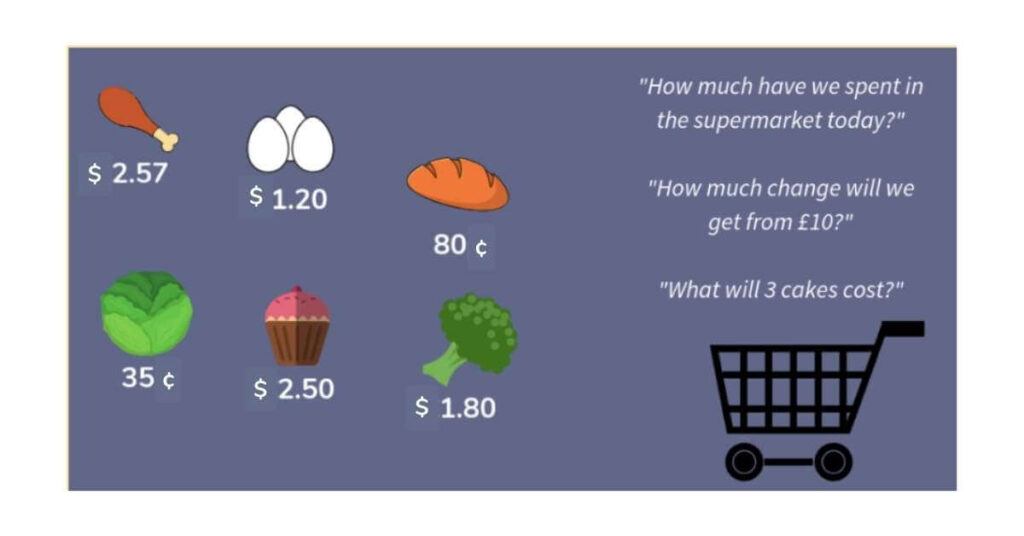
The complexity of problem solving will increase as children gain confidence and should always give them a chance to recall from everything they have learned so far across all four operations.
Common core progression year by year is based on a ‘typical’ development but if there are any number facts which have not been retained or which individuals are struggling with, it is important that reasoning and problem solving does not exacerbate any misconceptions or affect a students’s confidence.
How to teach the key number facts and mental strategies year by year
Mental math in kindergarten
In kindergarten, children should be able to recall one more and one less than any given number, although there is no requirement to specifically test any such skill formally at this stage.
You would hope they are starting to recall some number facts such as the bonds to 5 or even 10, but they may still be using a lot of visual representation through to 2nd grade to support their math.
Mental math in 1st grade
In first grade, children are expected to know their number bonds to 20 and to recall them and apply them to simple word problems.
In activities and testing, there will still be a lot of visual representation as they will often not be able to read a lot of text independently yet, so we do not want their math to be hampered by their reading.
Mental math in 2nd grade
In second grade children will learn to use multiples of 2, 5, 10, and 100. They should be able to apply their place value knowledge to partition larger numbers and then apply their number bonds and knowledge to questions involving these multiples.
They should be adding and subtracting up to 3-digit numbers and hundreds, using formal written methods but also applying their mental math skills to these calculations for the sake of fluency and speed.
Mental math in 3rd grade
In third grade, students will learn their multiplication facts 1- 10, and be expected to rapidly recall all math facts between 1-10. They will also be multiplying by 25 and 1,000.
Written methods will start including fluently adding and subtracting with 1,000 and their mental math skills will be vital to ensure they are able to check the accuracy of their answers by applying inverse operations.
Mental math in 4th grade
In fourth grade children will be working with numbers to 1,000,000 which makes their place value knowledge even more crucial. Mental math skills and recall of times tables, addition and subtraction facts will help them to calculate increasingly difficult problems.
They will continue to partition and also become more flexible with their preferences when working out problems mentally.
Mental math in 5th grade
In fifth grade children will be working with numbers to 1,000,000,000. Students should be able to apply their multiplication tables, and other known number facts to a wide range of reasoning and multi-step problems. They should be able to easily move between the four operations and calculate many steps in their head.
They may use workings out to help them with larger numbers, to jot down answers to each step or within a step when partitioning for example. But they are not always using formal written methods, which can take up valuable time in a test situation.
How to know when a child is secure enough to move on?
Supporting understanding
As you move through the introduction of different math facts and concepts across the four operations, applying them in a variety of ways teachers should spot the children who may know through memorization, but are less able to be flexible with numbers.
In this case, they may need additional support or intervention to deepen their understanding. This can mean going back to physical or visual representation of those numbers before, then building up the recall through math problems, which check their mental arithmetic skills.
Likewise look for children who seem to understand the concepts during a specific lesson – i.e. you are teaching subtraction and using manipulatives, they are able to work out the answers on some math worksheets but cannot quickly recall many facts mentally.
These children may need additional help and are showing that something has not ‘clicked’ in terms of their full understanding and/or fluency with number facts taught so far. It may be that they have misconceptions or that their working memory is hampered by slow recall which needs more repetition and practice.
Children who can recall easily and seem confident on single digit numbers, but then struggle with calculating two-digit numbers may lack security in place value.
If they are easily recalling multiplication facts but really struggling to use this in formal written methods it should be clear then that place value is an issue if their answers are wildly off the mark.
Signs your mental math is on track
Children who are confident and secure in their math knowledge, to the expected level in each grade, are able to make connections easily and apply their math knowledge to a range of questions.
You will also notice these students start to ‘play’ with numbers and operations. They are able to explain how they found an answer and can show you that they can check their answer by using the inverse operation.
Early intervention is key to ensuring that children do not hit stumbling blocks with math, and to ensure they are building their math repertoire over time, ready for moving to middle school.
Regular mental math test question practice, and some regular low stakes written tests to assess their recently taught math skills, alongside recall from previous learning, can help to keep checking for understanding.
Gap analysis of the commonly incorrect questions can feed directly into teaching so that whole class intervention is also swift. Individuals and groups can also then be given extra support or tutoring as needed.
At Third Space Learning, we understand that students have different gaps in their understanding, and learn at different speeds. That’s why our one-to-one AI math tutoring is tailored individually to each child’s needs, helping them to build fluency and confidence in math.
Our sessions provide students with opportunities to grow their understanding of number facts and apply them across a range of questions with the support of Skye, the AI math tutor.
Ahead with mental math
Crucial to the development of your students’ mental math skills is your confidence that you know what to teach at each stage of their math journey and why.
Hopefully this article and those on mental math strategies can provide you with a few straightforward tips and resources to help you to make a world of difference in children’s outcomes.
Do you have students who need extra support in math?
Skye—our AI math tutor built by experienced teachers—provides students with personalized one-on-one, spoken instruction that helps them master concepts, close skill gaps, and gain confidence.
Since 2013, we’ve delivered over 2 million hours of math lessons to more than 170,000 students, guiding them toward higher math achievement.
Discover how our AI math tutoring can boost student success, or see how our math programs can support your school’s goals:
– 3rd grade tutoring
– 4th grade tutoring
– 5th grade tutoring
– 6th grade tutoring
– 7th grade tutoring
– 8th grade tutoring
The content in this article was originally written by an EdTech consultant and multi-award-winning former primary teacher Jodie Lopez and has since been revised and adapted for US schools by elementary math teacher Christi Kulesza.
